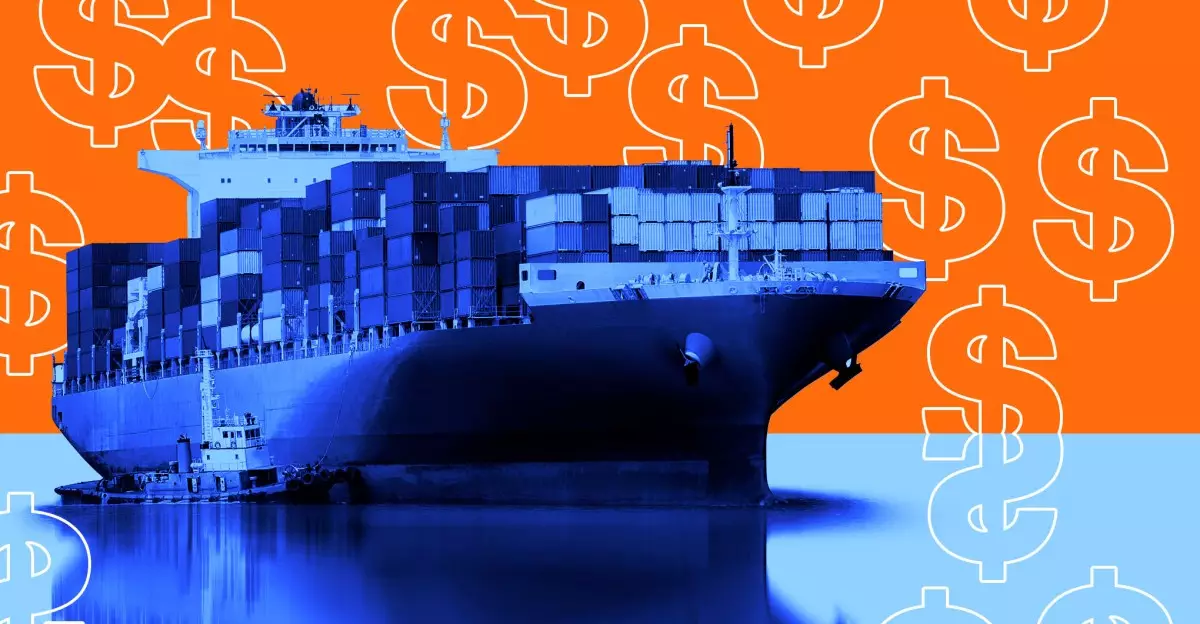As of May 2, 2025, the landscape of online shopping has fundamentally shifted with the expiration of the de minimis exemption on packages from China and Hong Kong. This exemption, a seemingly innocuous rule, allowed U.S. consumers to receive low-value goods—those valued under $800—without incurring tariffs. With nearly 1.4 billion packages utilizing this exemption in the previous year, its presence was deeply woven into the fabric of online retail. The directive from the Trump administration to scrap this rule represents not just a regulatory change but a significant overhaul of consumer expectations around shopping and delivery.
A Surging Tax Burden on Everyday Purchases
The abrupt removal of the de minimis exemption has introduced a complex tariff structure where packages will now be taxed significantly. Low-value packages sent through the international postal system, like USPS, will face a staggering fee of either 90% of the package’s value or a flat $75 per item. For those utilizing services like DHL, the implications are even more severe; they are subjected not only to these new taxes but also to additional product-specific duties, which could reach upwards of 20%. This seismic shift means that consumers will no longer enjoy the straightforward pricing they’ve come to expect, making online shopping not only more expensive but also more unpredictable, with added costs that could come as a shock when items arrive.
Impact on Retail Giants and Their Strategies
Retailers like Shein, Temu, and even larger platforms like Amazon have built their business models around the de minimis exemption. They thrive on low overhead and the ability to ship small quantities directly to consumers without the financial burden of tariffs. As these additional costs are introduced, it is inevitable that retailers will have to recalibrate their pricing structures. Many will likely absorb costs, but the reality is that consumers will ultimately bear the brunt of increased prices—whether through higher product costs or fees imposed at the time of purchase.
What this means in practical terms is that the shopping experience could drastically differ for U.S. consumers. Products that were readily available and affordable may become scarce or encumbered by elevated prices, as retailers wrestle with new operational costs. Those accustomed to the rapid fulfillment of desirable products could find themselves on the losing side, with fewer purchasing options and longer wait times as companies navigate the new tariff environment.
The Chaos of Implementation: A System Under Strain
One of the stark criticisms of this tariff structure is the apparent lack of readiness within customs and logistics systems to handle the sheer volume of packages exempt from formal entry processes. As Customs and Border Protection (CBP) gears up for these changes, it remains unclear how they will manage the influx of low-value imports. Studies suggest that processing these packages could cost the U.S. upwards of $3.2 billion annually, raising questions about whether the financial and operational efficiencies can be met.
Prior attempts at implementing the end of the de minimis exemption triggered confusion within postal services, reflecting a clear disconnect between policy creation and practical execution. USPS issued a now-retracted suspension on shipments from China, casting doubt on whether adequate systems are in place to process the millions of parcels arriving in the U.S. daily. This uncertainty poses logistical challenges that could further affect consumer behavior and, ultimately, the e-commerce landscape.
Broader Implications: A National Perspective
The end of the de minimis exemption has been framed by the Trump administration as a necessary measure to mitigate illicit goods from crossing U.S. borders, specifically addressing concerns regarding synthetic opioids. However, the correlation between ending this exemption and improving border security remains tenuous. The new rules could complicate matters further, potentially hindering the speed and effectiveness of customs inspections while lowering the overall volume of easily obtainable goods for American consumers.
As we consider the ramifications of these changes, it’s vital to reflect on what this means for the future of affordable e-commerce. With the existing framework dismantled, there is a palpable concern that U.S. shoppers may not only face increased prices but a reduced selection of goods. We could witness a landscape where discretionary consumer choices are curtailed, offering fewer alternatives for buyers and reshaping the entire digital retail ecosystem. This uneasy future hints at a system that may not only impact purchasing power but also the fundamental convenience that online shopping promised to deliver.

